The experiment parts from a self organizing model that iterates based in the incident sun hours, to later be evaluated in 2 methods: DCGAN’s and PIX2PIX.
Problem Statement:
The objective is to utilize urban farming strategically in central Budapest to enhance the affordability of student life. The key questions revolve around the potential yield, geometric characteristics, and user-friendliness of such an approach.
Condition:
The project is set in a low-income country with a medium-high density city that experiences a significant influx of students for temporary educational purposes (up to 6 years). Over the past 3-4 years, the region has witnessed a notable increase in inflation, while salaries have not kept pace. Typically, students’ income amounts to 40-55% of the average salary.
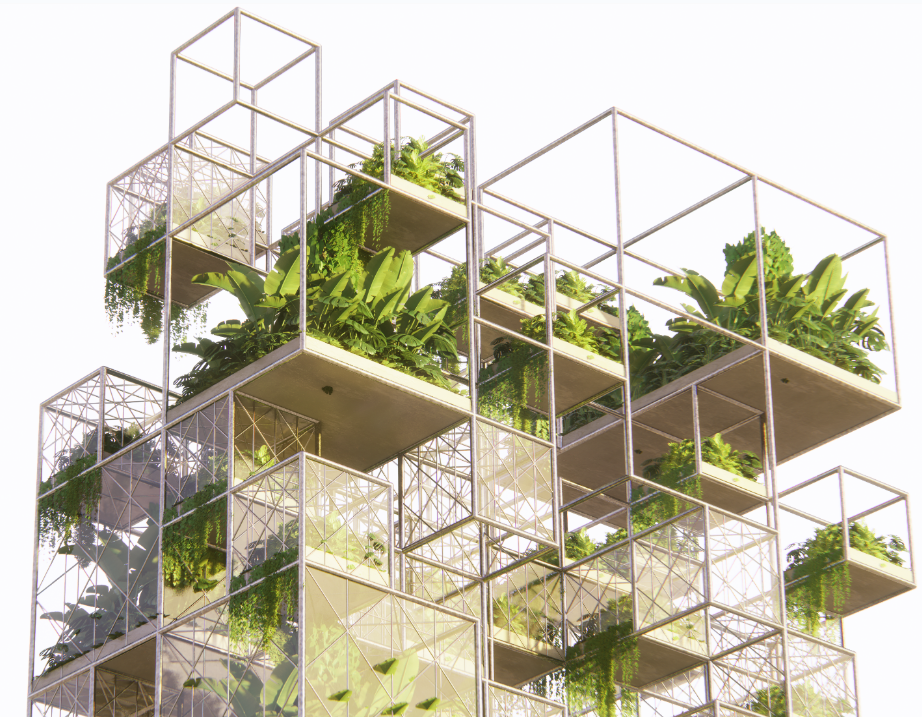
Sample Generation Logic
The process begins by gathering context data from OpenStreetMap (OSM). Subsequently, random square volumes are generated in the designated location and categorized as indoor or outdoor spaces. A structural grid is created, and an analysis of sunlight hours is conducted to assess its performance. If the results are satisfactory, a text file is generated, and an AI model is trained. If not, the process is repeated.

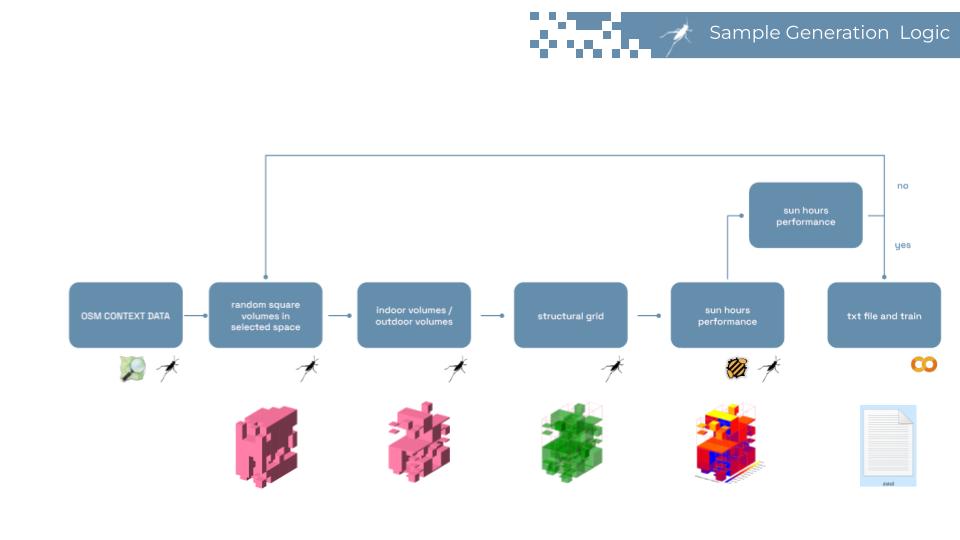
Grasshopper Script:
Once the iteration values are generated, the shape generation code is executed, followed by resizing the figure to align with the sample generation logic. The output is then visualized, and CSV files are exported for training within the Colab environment.
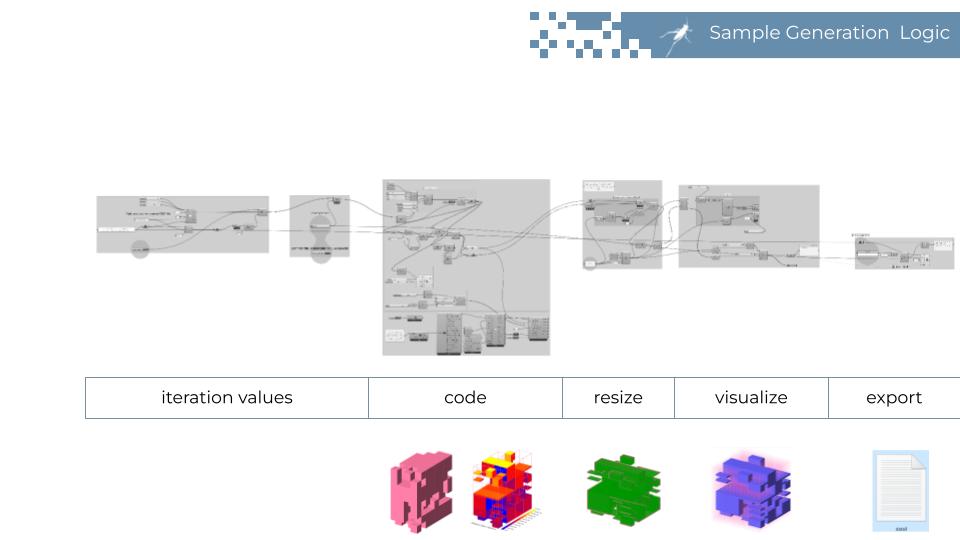
These samples represent the outcomes of the process.


Training Model
The dataset was trained using 2000 sets and 8000 epochs. Initially, the performance was poor, but as the sampling progressed, the generator loss improved and approached zero. However, to achieve more stable and consistent results, further training for an additional 10,000 epochs would be beneficial.
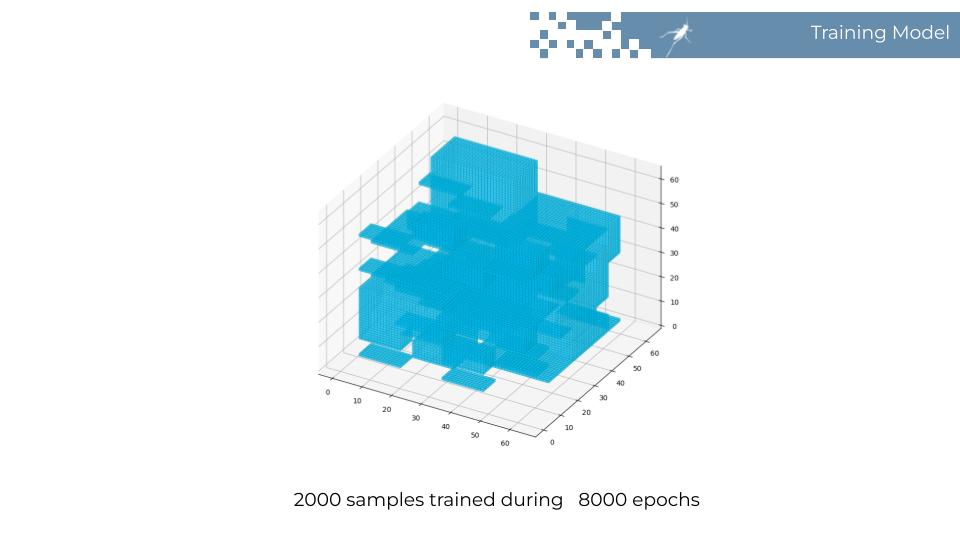
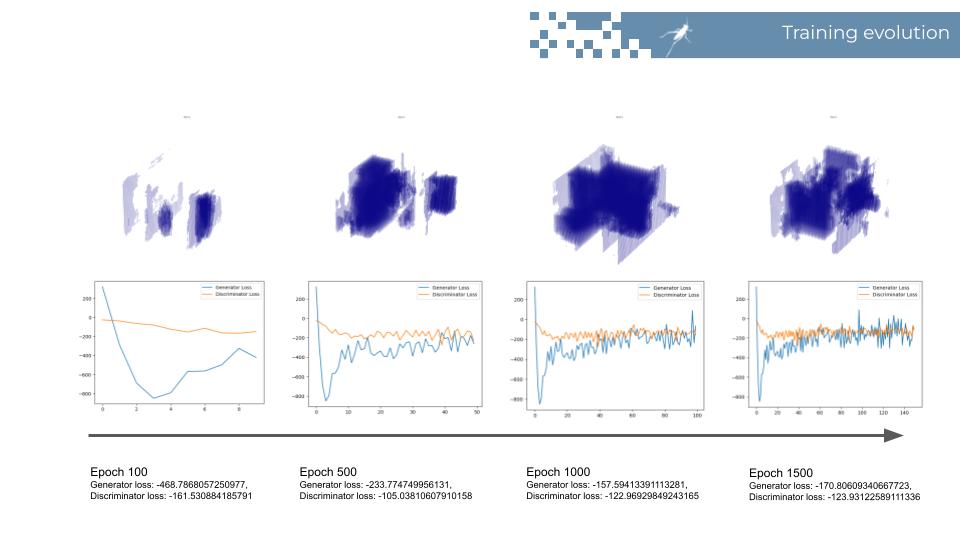
The model was trained in a set of 2000 samples during 8000 epoch
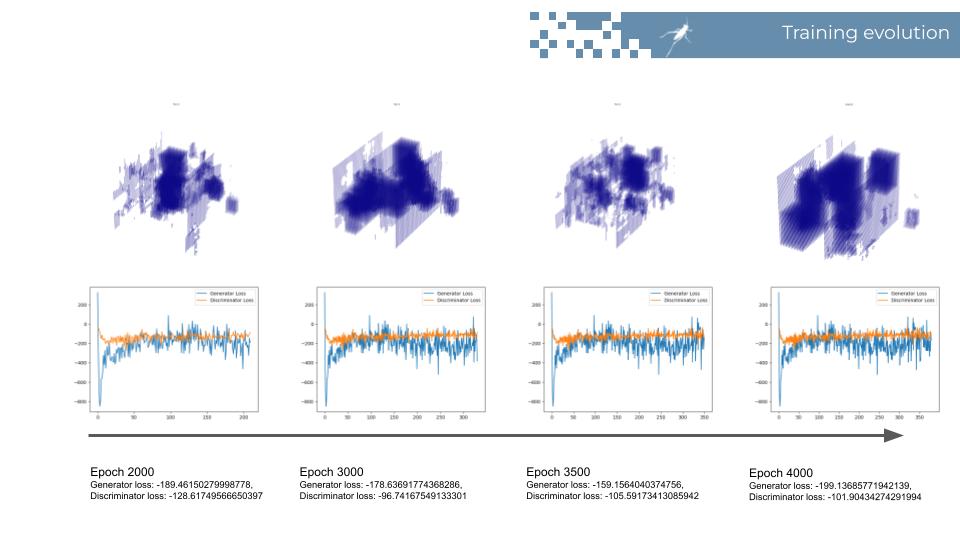

Latent Space Exploration
Latent space exploration was undertaken, and vectors were extracted for two vector interpolation. These vectors were then inputted into the solar radiation analysis, providing insight into how the geometry would be integrated back into Grasshopper. The analysis revealed an average of 1161 sun hours, which is considered reasonable for urban farming in the given environment.
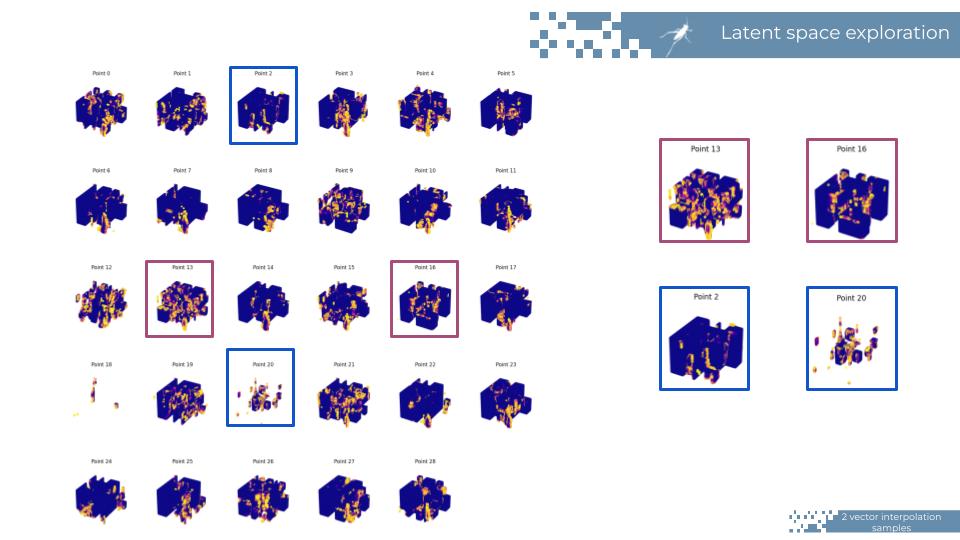

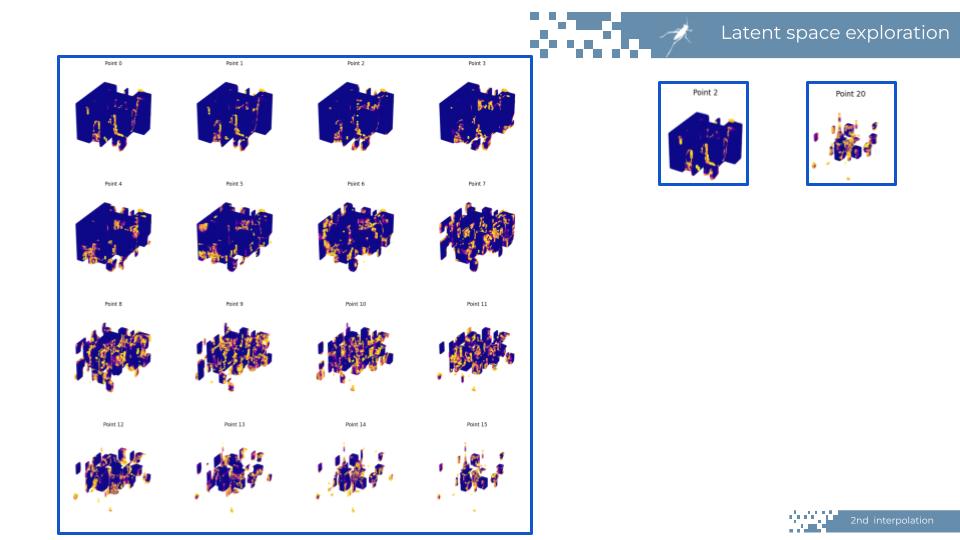
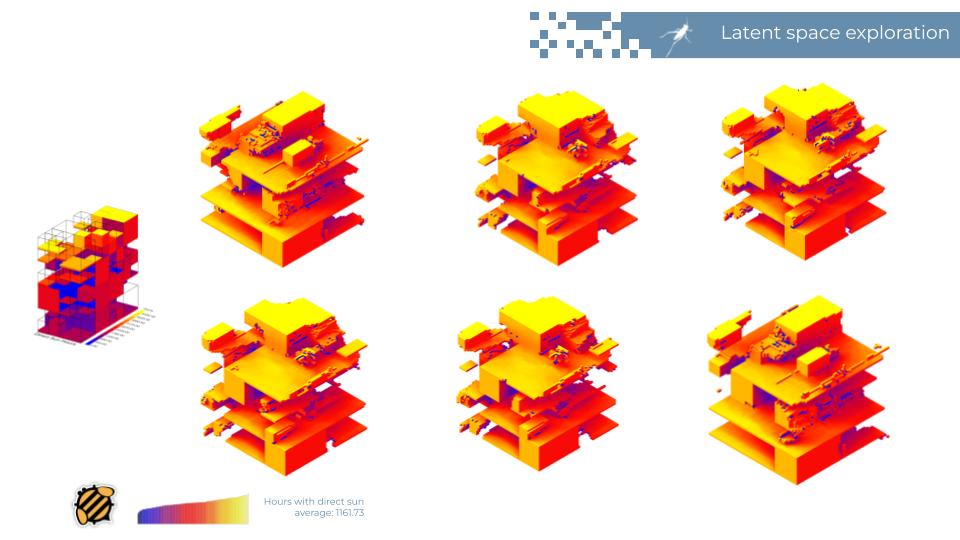
Pix2Pix
A Pix2Pix model was subsequently employed, reducing the percentage of slabs to increase sun exposure in the project. Despite this adjustment, the workflow remained unchanged. The text predictions were imported and analyzed, mirroring the approach taken in the pixelated model. The Grasshopper workflow was consistent throughout.
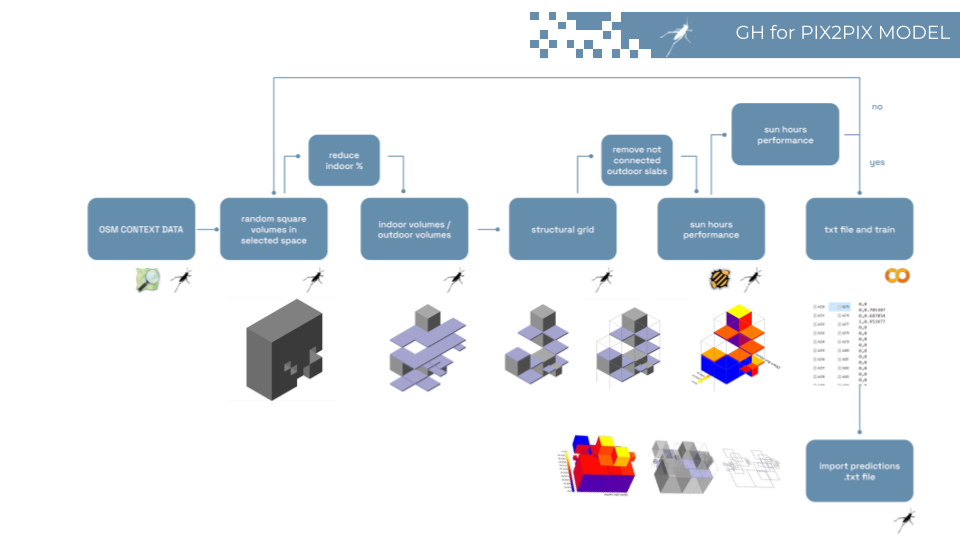
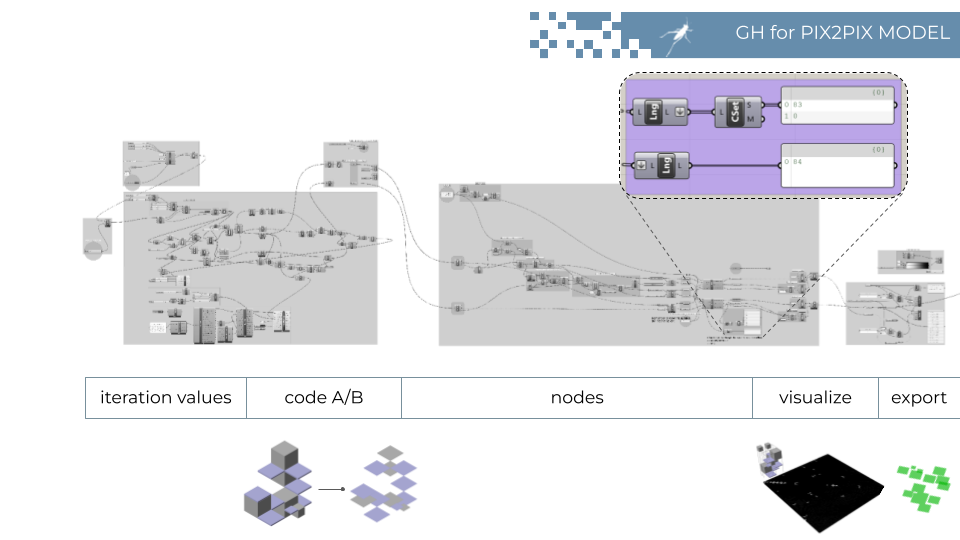
The resulting samples were exported as part of the training process.

Pix2Pix Training
Training commenced, with the generator loss gradually reducing and the discriminator loss increasing. The generator loss approached a lower value as the training progressed.

After approximately 570,000 training steps, clear and accurate predicted images were obtained, closely resembling the ground truth.



The model was also tested using data from the test dataset. The majority of predictions exhibited good performance, generating images similar to the ground truth. However, some incorrect predictions occurred due to the limited number of training steps (570,000).

An analysis of the sun hours performance revealed that the Pix2Pix model yielded lower results compared to the pixelated model. The latter model demonstrated a higher number of exposed hours, which aligned with the primary focus of the project.
Pix2Pix back to grasshopper

Conclusion
In conclusion, the combined use of the Pix2Pix model and the pixel mesh generation model yielded valuable insights into the geometry, user-friendliness, and solar exposure of the urban farming project. The superior sun exposure results achieved by the pixel generation model indicate its suitability for optimizing the design and placement of urban farming structures, maximizing productivity and sustainability in the context of central Budapest. This approach takes into account the challenging conditions of a low-income country, a high influx of students, and the affordability constraints faced by the population.


